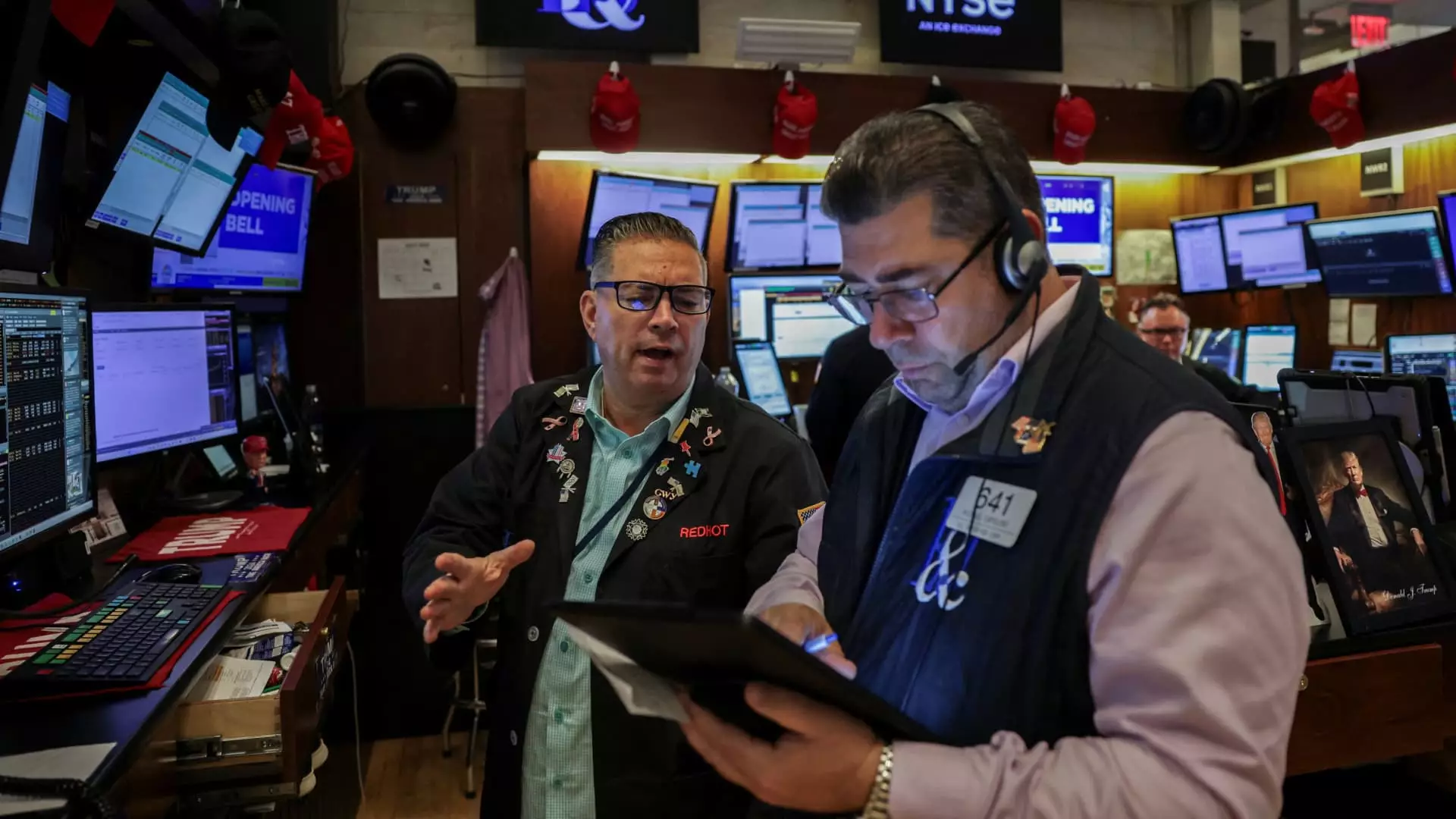In recent days, the stock market’s responses to corporate news have painted a complex picture of economic optimism intertwined with underlying fragility. While some companies demonstrate resilience—beating earnings estimates and hinting at stable growth—others reveal cracks that should alarm even the most optimistic investors. The significant swings in share prices, from Tesla’s anticipated decline to the unexpected rise of traditional industries, underscore a broader reality: the economy is still heavily tethered to uncertain geopolitical and monetary currents.
This volatility shouldn’t be dismissed as typical. Instead, it exposes the illusion that we are out of the woods. Many companies, despite beating earnings forecasts, warn of deeper issues—be it rising costs, market saturation, or regulatory challenges—that threaten long-term stability. These mixed signals demand a sober reflection on the true health of our economy. Are we genuinely seeing signs of sustained growth, or are we merely skating atop the surface of deeper vulnerabilities that could soon surface?
Corporate Earnings: A Mirage of Strength
The latest earnings reports present a perplexing narrative. For instance, firms like American Express, Interactive Brokers, and Charles Schwab have surpassed expectations, suggesting a robust financial environment. Yet, a closer look reveals that many of these victories are built on temporary factors: cost-cutting, favorable market conditions, or short-term demand spikes. Moreover, companies in sectors such as oil services and industrial manufacturing—like Schlumberger and 3M—are showing resilience, but only after enduring years of upheaval and restructuring.
The phenomenon of beating earnings estimates masks the underlying deceleration in economic momentum. Companies are often forced to engage in aggressive cost management or capitalize on cyclical demand to sustain gains, rather than demonstrating genuine growth. This pattern hints that the apparent strength may be superficial, masking fundamental weaknesses that could threaten future profitability. Investors need to be wary of celebrating success too soon—what seems like a sign of health may, in reality, be a symptom of a fragile recovery.
The Fragility of Industries and the Political Implications
The recent developments in industries such as energy and biotech are particularly telling. Chevron and Hess’s positive momentum following a dispute resolution exemplifies the volatility in resource markets, which are inherently susceptible to geopolitical tensions. The oil sector’s recovery may appear encouraging, but it is fragile—dependent on volatile geopolitical landscapes, regulatory regimes, and global supply chains that remain uncertain.
Similarly, Sarepta Therapeutics’ steep decline after a tragic data point underscores how fragile biotech investments are—linked tightly to public perception, regulatory approval, and safety concerns. The stark contrast between these sectors highlights the economic dichotomy: some areas are riding the wave of recovery, while others are vulnerable to crises that could escalate with little warning.
These issues carry serious political implications. The looming debate over regulatory tightening, energy policy, and healthcare reform can dramatically shift market dynamics. For centrist and center-right policies, the challenge lies in balancing regulation that safeguards public interests without stifling innovation and growth. The recent market moves suggest that overly burdensome policies risk suffocating the economic engine, while insufficient oversight could lead to deeper crises.
Digital Assets and Fiscal Risks
The recent surge in crypto-related stocks reveals a stubborn undercurrent of speculative excess. While the passage of crypto legislation may seem like a sign of maturity, it also exposes a sector still rife with volatility and unregulated risks. The sharp fluctuations in ether prices—rising to six-month highs—highlight both the potential and peril of digital assets. Firms like Coinbase and Circle illustrate that fintech and crypto markets are deeply intertwined with national regulatory trust, an uncertain foundation that could destabilize the financial sector if mishandled.
Here, the political stakes are clear. An overly permissive approach to crypto regulation could foster unchecked speculation, risking taxpayer-funded bailouts or financial instability. Conversely, excessive crackdowns might stifle innovation, delaying economic adaptation to new digital paradigms. The balance is delicate, and history suggests that uninformed policies will only deepen the economic fissures already present.
Underlying Risks: A Cautionary Tale for the Future
Beneath the surface of seemingly positive earnings and market adjustments, a collection of risks lurks. Rising costs for content and marketing at Netflix mirror broader inflationary pressures, while regional banks like Western Alliance face challenges that threaten their very existence. The overall picture points toward an economy facing a set of structural issues: debt accumulation, shrinking profit margins, geopolitical tensions, and regulatory uncertainties.
The nuances of these corporate and sectoral shifts reveal a pattern—markets are increasingly driven by short-term reactions rather than long-term fundamentals. This volatility is not just noise; it is symptomatic of a system that has been stretched thin by decades of low-interest rates, extensive government intervention, and global instability. If recent market movements teach us anything, it’s that complacency is dangerous. We are skating on thin ice, with the cracks widening beneath a veneer of superficial strength.
In the end, the current market landscape serves as a stark reminder: economic resilience is often fragile, and the foundation beneath the hype is more unstable than many realize. It is essential for policymakers and investors alike to recognize these signs before the inevitable reckoning arrives.

